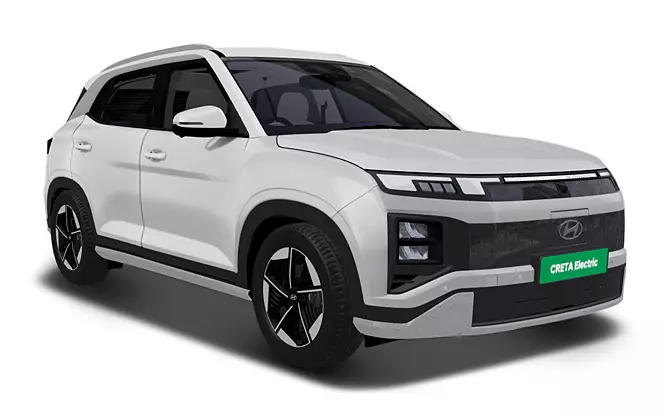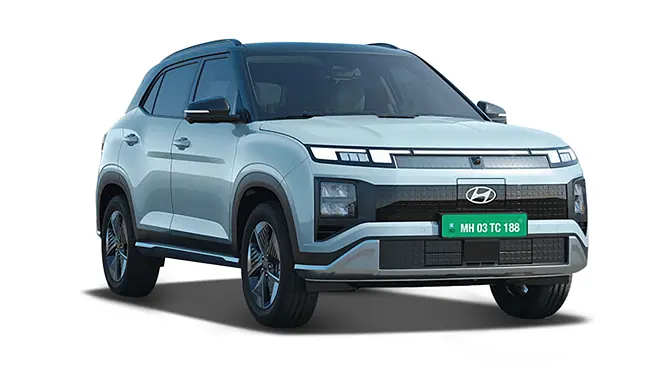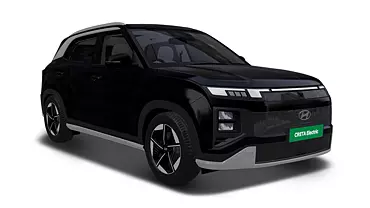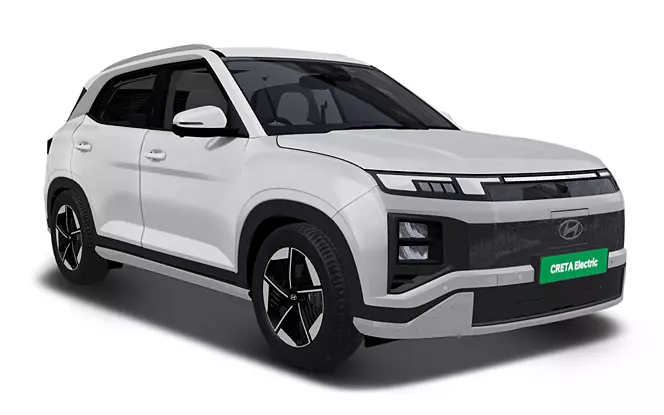Hyundai Creta Electric: The Premium Compact SUV for the Future
The Indian electric vehicle (EV) market has seen significant growth over the past few years, with both domestic and international carmakers stepping up their game to deliver efficient, powerful, and stylish electric options for consumers. Among the latest entrants in this growing segment is the Hyundai Creta Electric, launched in 2025. This eagerly awaited model is a fully electric version of the immensely popular Creta SUV, and it’s already creating waves in the automobile industry.
Priced at around ₹17.99 lakh (ex-showroom), the Hyundai Creta Electric offers a compelling package that combines performance, comfort, range, and futuristic design. It is targeted toward urban families and tech-savvy buyers looking for an eco-friendly, premium compact SUV that doesn't compromise on style or features.
A New Era of the Creta Legacy
The Hyundai Creta has long been one of the best-selling SUVs in India, known for its sporty design, comfort, and value-for-money proposition. With the electric version, Hyundai aims to capitalize on this legacy by offering a vehicle that retains the core identity of the Creta while embracing an emission-free future.
Unlike many electric vehicles that are built from scratch on EV-specific platforms, the Creta Electric is expected to share much of its design language and structural underpinnings with the ICE (Internal Combustion Engine) Creta, but with subtle EV-specific modifications. These include a closed-off front grille, blue accents symbolizing electric identity, aerodynamic alloy wheels, and a reworked rear profile with exclusive badging.
Performance and Battery Capacity
The heart of any electric vehicle is its battery and motor setup. The Hyundai Creta Electric is expected to come equipped with a 42 kWh lithium-ion battery pack, which is adequate for city commutes as well as short road trips. With an estimated range of approximately 400 km on a single charge, it stands as a serious competitor in the mid-range EV segment.
This range figure, while estimated, positions it favorably against rivals like the Tata Nexon EV Max and the MG ZS EV. Real-world range will depend on driving habits, road conditions, and AC usage, but Hyundai's efficient powertrain engineering suggests a dependable performance profile.
Although Hyundai hasn’t officially disclosed full performance specifications yet, it's anticipated that the Creta Electric will offer a power output of around 135–150 bhp and a peak torque of over 250 Nm, ensuring brisk acceleration and effortless city driving. The SUV is likely to feature multiple drive modes—Eco, Normal, and Sport—allowing drivers to adapt performance based on their needs.
Charging Options and Infrastructure Compatibility
Charging flexibility is a major consideration for EV buyers. The Hyundai Creta Electric is expected to support both AC and DC fast charging. With a standard AC home charger, it might take around 6 to 7 hours for a full charge. However, with a 50 kW DC fast charger, the vehicle can charge from 10% to 80% in under 60 minutes, making it a convenient option even for long journeys.
Additionally, Hyundai is steadily expanding its charging infrastructure and partnerships with third-party providers in metro cities and highways to make EV ownership stress-free. Buyers can also opt for Hyundai’s home charger installation service, which is included with the vehicle in some packages.
Interior and Features
The Creta Electric carries forward Hyundai’s tradition of offering feature-rich cabins. Inside, the vehicle boasts a modern, tech-forward design with a focus on comfort, connectivity, and safety. Some of the expected features include:
-
A 10.25-inch touchscreen infotainment system with Apple CarPlay and Android Auto
-
A fully digital instrument cluster with EV-specific displays such as battery status, range, and energy usage
-
Wireless charging pad, multiple USB ports, and voice recognition
-
Connected car technology (Hyundai Bluelink) for remote access, tracking, and diagnostic updates
-
Dual-zone climate control, ventilated front seats, and premium upholstery options
The cabin layout has been slightly modified to accommodate the battery pack without compromising space. The flat floor design in the rear enhances legroom and makes the cabin feel more spacious.
Safety and Build Quality
Hyundai places a strong emphasis on safety, and the Creta Electric is expected to come equipped with several active and passive safety features, including:
-
Six airbags (standard or in top variants)
-
ABS with EBD
-
Electronic Stability Control (ESC)
-
Hill Hold Assist
-
ISOFIX child seat anchors
-
Rearview camera with dynamic guidelines
-
Tyre Pressure Monitoring System (TPMS)
Given Hyundai's global reputation and stringent safety testing, the Creta Electric is anticipated to score well in crash safety ratings once tested.
Design: Evolution with Distinction
From a design standpoint, the Creta Electric stands out with subtle yet distinctive EV styling cues. The front fascia gets a blanked-off grille—a common feature in EVs—along with sleek LED DRLs and updated headlamps. The rear of the car might feature a redesigned bumper, EV badging, and a continuous LED light strip to highlight its futuristic character.
The vehicle sits on aerodynamically optimized alloy wheels, contributing to improved efficiency and reduced drag. Hyundai might also offer new color options exclusive to the EV model, appealing to a younger and environmentally conscious demographic.
Market Positioning and Competition
At ₹17.99 lakh, the Hyundai Creta Electric is positioned between the Tata Nexon EV Max and MG ZS EV, both of which have been popular choices among Indian EV buyers. While Tata offers affordability and localization, MG boasts international styling and features. Hyundai, on the other hand, brings a balanced package of brand trust, performance, features, and after-sales support.
The electric SUV segment in India is becoming increasingly competitive, but Hyundai has an advantage with its extensive dealership network, strong customer loyalty, and a track record of innovation.
Environmental Benefits and Future Outlook
One of the biggest reasons to consider the Creta Electric is its environmental impact. As cities become more congested and pollution levels rise, transitioning to EVs is no longer just a choice—it’s a necessity. By reducing tailpipe emissions to zero, the Creta Electric contributes to cleaner air and a greener planet.
The vehicle also benefits from government incentives, such as FAME-II subsidies and lower registration and road tax costs in many states. These can further reduce the effective cost of ownership, making it an attractive investment for eco-conscious buyers.
Looking ahead, Hyundai has committed to introducing more EV models in India. The Creta Electric is just the beginning of a broader strategy aimed at building a strong presence in the EV space, competing not only with local players but also setting a benchmark for international standards.
Conclusion
The Hyundai Creta Electric represents a bold step toward a sustainable automotive future. With its stylish design, competitive pricing, decent range, and feature-rich cabin, it appeals to a wide spectrum of buyers. Whether you're an early EV adopter, a Hyundai loyalist, or someone looking for a practical yet premium SUV that runs on clean energy, the Creta Electric makes a solid case.
In a world that is quickly moving toward electric mobility, the Hyundai Creta Electric is not just a car—it’s a statement. A statement that says you’re ready for the future, and you’re not willing to compromise on performance, style, or comfort to get there.















